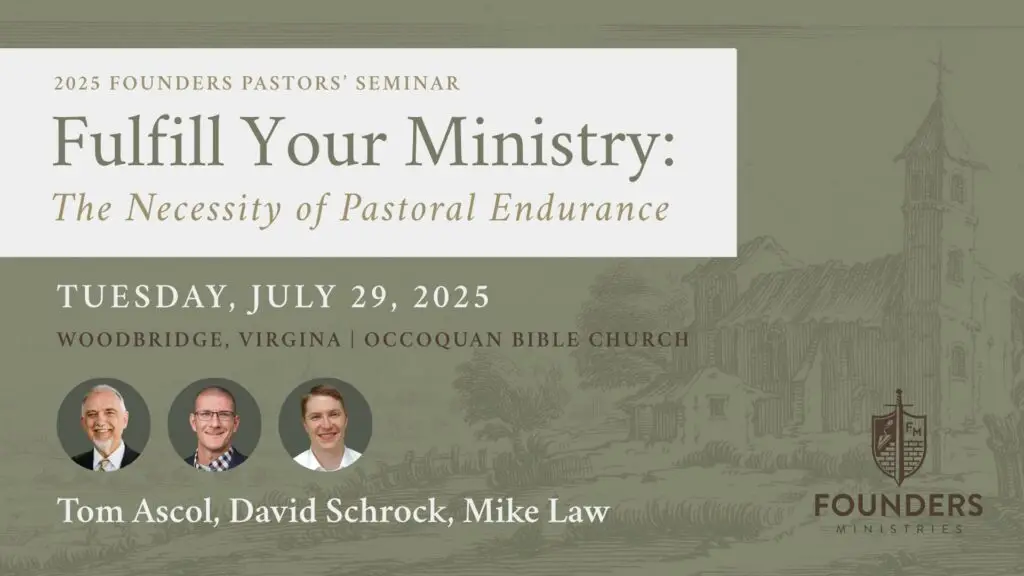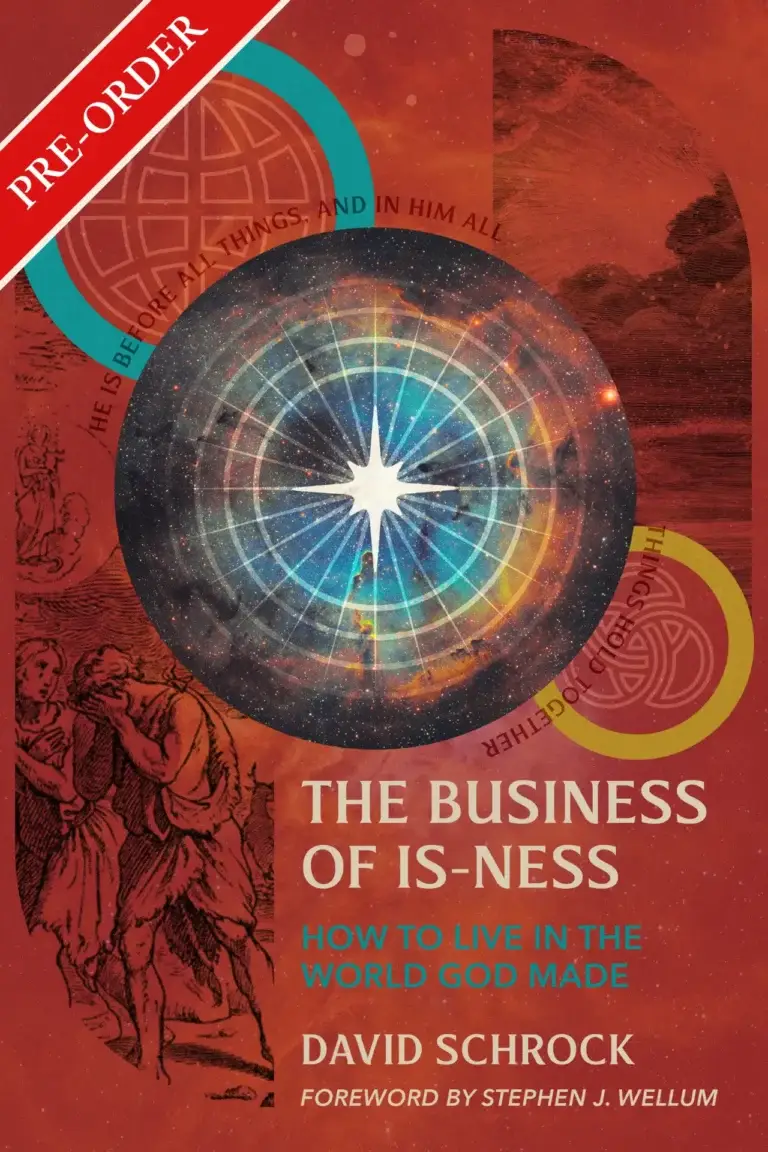In the aftermath of the 2019 Southern Baptist Convention, it has become apparent that Resolution 9 “On Critical Race Theory and Intersectionality” was briskly moved through the resolution and voting process and (whether intentionally or not) without much needed discussion and debate. The voters that passed the Resolution may, indeed, have been largely uninformed as to the import of their decision. This is understandable since the Resolution itself contains no requisite information on the subject it approves and designates acceptable “analytical tools” in theological and pastoral practice. Unless the attendees of the Convention possessed preexisting expertise in critical theory, cultural studies, or the like, the matter must have appeared abstruse. And yet, they were asked to pull the lever on behalf of their brethren anyway.
Contributions have been made by Owen Strachan, Tom Ascol, Chris Bolt, and Al Mohler, among others to acquaint evangelicals with critical theory and to critique its origins, claims, and effects. The Engaging Critical Theory & The Social Justice Movement booklet authored by Neil Shenvi and Pat Sawyer remains the best introductory resource to contemporary critical theory for Christians.
As the author of the proto-Resolution 9, Stephen Feinstein, has recently said, one positive outcome of the Resolution’s passage has been the resultant discussion on critical theory, intersectionality, and identity politics. Hopefully, attendees of the 2020 Convention will arrive more informed, and therefore more equipped to consider the Resolution, than were their predecessors.
The efforts of the names above notwithstanding, confusion remains. And the recent Q&A with the 2019 resolutions committee did little to allay said confusion. (See The Sword and The Trowel podcast response here). Clarification is still needed, especially with the 2020 Convention fast approaching, where Resolution 9 is (if Jared Longshore has anything to do with it) sure to be a hot topic and up for reassessment. Whatever the persuasion of the reader on Resolution 9, it behooves them to consider their position based on an accurate understanding of the concepts in question.
What follows is an addendum of sorts to my recent article here at Founders, “Identity Politics and the Bondage of the Will.” I promise that this installment will be relatively short. If you were one of the brave souls that actually read the latest Founders Journal, then this will be welcome news. Below is what will hopefully act as definitional clarity regarding intersectionality that coincides with the argument of the previous article but, had it been included therein, would have served to distract from its central thesis.
Intersectionality: an “analytical tool”?
The text of Resolution 9 describes critical race theory (CRT) and intersectionality as “analytical tools.” The resolutions committee has since explained that “We used analytical tools to distinguish between the worldview of CRT/I’s creators and the concepts that are used from these theories by some Christians.” Joe Carter of The Gospel Coalition has called intersectionality an “analytic framework” that is useful for identifying “structural sin” and is therefore an acceptable framework for Christians to apply so long as it does not become an “ideology.” (He fails to mention that critical theorists maintain that “ideology”, especially as structurally reified in political institutions, is the primary obstacle to the realization of human liberation). In both the cases, intersectionality is presented as separable as an “analytical tool” from the worldview out of which it sprung.
Al Mohler has ceded that CRT and intersectionality are “analytical tools” but clarified that, “They emerged as analytical tools, but they were never merely analytical tools, and in the common discourse in the United States — and especially in public argument, and in higher education — both critical race theory and intersectionality are far more than analytical tools.”
I have referred to intersectionality as “the linchpin” which allows the assumptions and convictions of critical theory to descend, so to speak, to the ground level for application. But a question remains as to whether conceiving of CRT and intersectionality (but especially intersectionality is in focus here) as “analytical tools” (even if not merely such) as opposed to a worldview is entirely accurate. The originator of intersectionality might beg to differ.
According to its architect, Kimberlé Crenshaw, intersectionality was introduced to the critical legal studies field in the late 1980s via her famous article, “Demarginalizing the Intersection of Race and Sex: A Black Feminist Critique of Antidiscrimination Doctrine, Feminist Theory and Antiracist Politics,” as a “heuristic term to focus attention on the vexed dynamics of difference and the solidarities of sameness in the context of antidiscrimination and social movement politics.” In particular, “[i]t exposed how single-axis thinking undermines legal thinking, disciplinary knowledge production, and struggles for social justice.”
The frustration that has fueled Crenshaw’s writings over the past several decades, and led to her espousal of intersectionality, is that whilst she believes (like any good critical theorist) that society is stratified along lines of race, gender, sexuality, and the like, antidiscrimination law examines race and gender separately (i.e. single-axis thinking) to the detriment of women of color and others who inhabit the intersection of two or more dominated classes. As a result, compounded discrimination due to interlocking oppressions is not addressed by the law. The courts and legislatures, in Crenshaw’s mind, simply do not think about discrimination appropriately. Crenshaw criticizes the law’s preoccupation with “color-blindness and equal process [i.e. procedural fairness]” (a point on which she denounces Thomas Sowell relentlessly) but her contention is not so much that adequate legal solutions have not or do not exist; it is that a certain mindset or awareness is lacking in their demonstration and application. This alleged blind spot in the law has effectuated the “erasure” of women of color, Crenshaw often says. A corrective was/is needed, and she provided it in the form of intersectionality.
In 2013 article for Signs: Journal of Women in Culture and Society, Crenshaw approvingly acknowledged how intersectionality has, since 1989, grown into a discrete discipline, i.e. “intersectional studies,” applied across a range of focus areas. (Patricia Hill Collins is another big name here). This burgeoning field can be characterized by three sets of “engagement”: 1) application of an “intersectional framework or investigation of intersectional dynamics”; 2) debates about scope, method, and content of intersectional studies itself; and 3) “political interventions employing an intersectional lens.” It is the first “engagement” that seems to be most relevant to debates within the Southern Baptist Convention and evangelicalism writ large regarding the legitimacy of intersectionality as an “analytical tool.”
Crenshaw certainly calls her creation a “framework,” a “lens,” and an “analytical tool” used to “capture and engage contextual dynamics of power”; and she chastises those who have adopted an intersectionality that is inordinately “fascinated with the infinite combinations and implications of overlapping identities.” The purpose of the intersectional analytic is to critique how structures of power constitute conditions of life which marginalize the Other through “multilayered and routinized forms of domination,” and how preexistent “interventions” have failed to take this into account. On this point, Crenshaw directs us to her 1991 article, “Mapping the Margins.”
But, as with so many other words accosted (or in this case, conjured up) by critical theorists, the meaning of “intersectionality” as an “analytic” is not quite so simple as it seems. Crenshaw has something else in mind. The following qualifications may seem tedious but are nevertheless key to grasping Crenshaw’s vision, and the true meaning and purpose of intersectionality.
First, “Intersectionality has, since the beginning, been posed more as a nodal point than as a closed system—a gathering place for open-ended investigations of the overlapping and conflicting dynamics of race, gender, class, sexuality, nation, and other inequalities.” “This seems to us,” continues Crenshaw, “to be a more apt description of intersectionality’s starting point than one that frames intersectionality as only categorically, spatially, or temporally rooted in specific relations or superficially preoccupied with ‘difference.'” Intersectionality, insofar as it is a “tool,” is an ever-morphing, expansive “tool.” Its uses and applications have not yet been fully discovered or articulated. The possibilities are endless. People should therefore disabuse themselves of the notion that they can accurately predict its permutations and effects and thereby safely dabble in its use.
Second, and most importantly, intersectionality is not so much an “analytical tool” as it is an “analytic sensibility” or “disposition.” In discussing the ever-broadening field of intersectionality theory, Crenshaw writes,
[I]ntersectionality is best framed as an analytic sensibility. If intersectionality is an analytic disposition, a way of thinking about and conducting analyses, then what makes an analysis intersectional is not its use of the term ‘intersectionality,’ nor its being situated in a familiar genealogy, nor its drawing on lists of standard citations. Rather, what makes an analysis intersectional…is its adoption of an intersectional way of thinking about the problem of sameness and difference and its relation to power. This framing—conceiving of categories not as distinct but as always permeated by other categories, fluid and changing, always in the process of creating and being created by dynamics of power—emphasizes what intersectionality does rather than what intersectionality is.
Crenshaw is clear, intersectionality is a sensibility, a mindset, an awareness, an outlook. It is an adopted instinct that heightens one to the concerns asserted by intersectionality itself (or more broadly, critical theory). It is significant that Crenshaw uses the terms “sensibility” and “disposition” to describe her project. She urges intersectionality theorists to work towards articulating the “collaborative sensibility” of intersectionality further in order to “facilitate its growth as a field.” The emphasis is on the intersectional sensibility producing intersectionally-informed tools (and intersectionally-informed policies and practices), not so much that intersectionality is a tool itself.
“Sensibility” is a term more commonly associated with art, not analytical inquiry. One can possess an artistic or poetic sensibility; an appreciation for, and sensitivity toward, things that are beyond logical analysis. It makes little sense to approach Michelangelo’s Sistine Chapel frescoes analytically.
“Disposition” too signals something other than addressing complex problems logically, rather it is something that exist prior to and transcends such. It is a temperament, a tendency, an inclination. For instance, Michael Oakeshott and Russell Kirk, among others, described conservatism in the first instance not as a creed, ideology, or prescribed body of principles, but rather as a disposition existing at the outset prior to discrete policy commitments. Subsequent policy decisions or articulated principles are conditioned by the preexisting disposition. In the same way, the intersectional sensibility, instead of being a standalone, separable “tool,” enables preexisting mechanisms of a given discipline to be properly employed unto desired intersectional ends.
Earlier this week, an article in The Nation by the editor of the Signs journal, Suzanna Danuta Walters, praised Elizabeth Warren for running “an unapologetically intersectional campaign.” Whilst other candidates for the Democratic primary have championed policies favorable to oppressed groups (racial, gender, and sexual minorities), Walters explains, Warren stands above the rest in this regard. Why? Because intersectionality pervades all of her policies. She understands the interlocking nature of oppressions; she knows that race and gender are not single-issue vectors; she is a multi-axis thinker. She possesses the “respectful attention” of intersectionality. Warren has eliminated the typical bifurcation between policy issues previously thought discrete.
Walters provides myriad examples, but a couple will suffice here as representative. She quotes Warren approvingly as stating that, “All policy issues are disability policy issues,” which must be approached with a “disability rights lens, from criminal justice reform to ensuring a high-quality public education for all, to strengthening our democracy.” Proposals for empowering indigenous peoples become proposals for empowering female, gender-non-conforming, sexual minority indigenous peoples. And so on. The crux of Walters’ endorsement of Warren is that the latter doesn’t just talk about a few, intersectionally-informed policy positions. Rather, she “does” intersectional politics across the board; her entire policy agenda is saturated by it. Hence, per Walters, Warren is the first presidential candidate to truly exhibit the intersectional sensibility.
Ijeoma Oluo, in her 2018 bestseller, So You Want to Talk About Race?, affirms the all-encompassing nature of this sensibility. “Remember,” she says, “while embracing intersectionality is vital for our efforts of fighting racism and other oppression, it applies to all aspects of our lives, not just our movements.” She goes on to suggest that it must dictate not only public policy formation and voting choices, but school curriculum, corporate practices, and even our private conversations and personal relationships. The intersectional sensibility is a guide to life.
Returning to Crenshaw, she warns her fellow travelers that intersectionality can and has been imported “into spaces and discourses that are themselves constituted by power relations that are far from transparent…Both the ideas at issue and the responses that insurgent ideas engender reflect structural relations that are dynamically constituted by the very forces being interrogated.” Further, “disciplinary conventions import a range of assumptions and truth claims that sometimes contribute to the very erasures to which intersectionality draws attention.”
Her point is that the disciplines into which intersectionality is being imported by its proponents are already constituted and conditioned by the very power dynamics that the intersectionist is to critique. What she cautions against is allowing those preexisting power dynamics to hamstring the intersectional sensibility by forcing it into rigid, predetermined categories and methods of inquiry. In sum, intersectionality is quite literally a game changer. Intersectionality is there to critique and alter the ways in which disciplines are framed, how relevant questions are asked, and how practitioners approach and frame their own subject matter.
This is, in part, why intersectional theorists (and critical theorists in general) are skeptical of drawing hard lines between disciplines and areas of discourse. In critical legal studies (the field from which Crenshaw and other critical race theorists and black feminist legal thinkers emerged), for example, the primary tenets of its subscribers are that 1) law is “contingent” or “indeterminate” and therefore lacks its own independent integrity; 2) law is politics by other means. Per Jack Balkin, law is a mechanism of “apology” used to legitimize the status quo. Crenshaw speaks of law’s function in explicitly Gramscian terms when she describes it as a hegemonic tool employed to suppress the utopian imaginations of dominated groups by convincing them that present social dynamics are inevitable and necessary, thereby reifying and flattening power relationships. Law as a “social artifact” induces people to “accept or consent to their own oppression.” Indeed, the whole theory of Gramsci’s notion of hegemony is that the “most effective kind of domination takes place when both the dominant and the dominated classes believe the existing order…is satisfactory.”
Intersectionality is not one “analytical tool” among many at the disposal of academics, but rather a paradigm shifting intervention that promises transformation.
One result of this conception of law is that legal scholars must become interdisciplinary. If law, as a social construct in service of the powerful, has no inherent integrity and is marked by endless internal contradictions (and the perennial is v. ought questions), then the determination of what the law should be must be informed by insights from without, namely, sociology, political science, economics, and yes, critical theory. Though Crenshaw’s own career has been mostly situated in the legal world, her advice above is meant to be general.
And so, the intersectionist arrives to her discipline with a predetermined outlook (the intersectional mind) and with particular mission—i.e. a “reformist intervention.” Intersectionality is not one “analytical tool” among many at the disposal of academics, but rather a paradigm shifting intervention that promises transformation. From Crenshaw’s perspective, if an area of study, be it mathematics, history, or theology, looks the same when you’re done, you’re doing it wrong. So, whilst an intersectional theorist may operate within the discursive conventions and research protocols of their environment—which determines how social dynamics are conceptualized and related—the end goal is to reshape these conventions and protocols in the image of intersectionality.
The dedicated intersectionist does not import a foreign “tool” into a discipline whereby said “tool” becomes one among many sources of analytical investigation. More accurately, she “harness[es] the most effective tools of [her] trade to illuminate how intersecting axes of power and inequality operate to our collective and individual disadvantage and how these very tools, these ways of knowing, may also constitute structures of knowledge production that can themselves be the object of intersectional critique.”
According to the mother of the theory, intersectionality does, and must, change the discipline into which it is inserted because the intersectionality-minded practitioner knows that the “spaces and discourses” into which intersectionality travels “are themselves constituted by power relations [structural and otherwise]” and which are formed by the “very forces being interrogated” by intersectionality theorists. More so than being a “tool” itself, intersectionality is a conditioner of tools, a shaper of analysis that dictates the form and approach thereto.
Intersectionality can hardly be described as a method, tool, or framework (or more accurately, a sensibility) that was “appropriated” by Crenshaw. It was her creation, and one that not only would not have occurred to someone operating outside of the field of critical theory, but one that necessarily depends on critical theory assumptions and that was designed, so to speak, to further the purposes and ends of critical theory—most obviously, emancipation from unnecessary constraints and hegemonic domination.
Whose Tool? Which Sensibility?
It is, in fact, nonsensical and contrary to the purpose and presuppositions imbedded in intersectionality to attempt to employ it as an analytical tool “subordinate to Scripture—not as [a] transcendent ideological framework”—though, to be fair, critical theorists are in the business of critiquing “ideology” (especially of the capitalist, western, and Christian ilk) and do not recognize a “transcendent” anything.
I do not believe that most Christians intend to adopt Crenshaw’s sensibility, at least not wholesale. My anecdotal survey of Christian engagement with critical theory over the past few years has convinced me that most of Christians adopt the language and concepts of critical theory and intersectionality as a kind of appendage to their faith. This seems to spring from a perceived ineptitude in their theology revealed to them by the politically and socially disruptive events of the day. The point here is that the language of Resolution 9 as it stands fails in two ways: 1) it does not accurately describe intersectionality; and 2) following from the first oversight, it opens the door to the full realization of intersectionality as described above. These problems should be addressed by Southern Baptist Convention attendees, at least for the sake of precision and candid debate.
Christians should receive their sensibility from the Holy Spirit through Scripture.
Intersectionality as an “analytical tool” is, by the intent of its author, inextricably bound to the intersectional sensibility. Properly, the two are inseparable or even indistinct. Accordingly, intersectionality cannot be used by Christians as intended absent the adoption of the accompanying sensibility. Intersectionality is not simply a tool useful for identifying structural sin because the sensibility required of the practitioner by this tool does not include a Christian concept of sin, human nature, or man’s chief end.
Christians should receive their sensibility from the Holy Spirit through Scripture. Their approach to, and use of, “analytical tools” should be informed by Christian concerns, a Biblical outlook on (the very real and historical) challenges currently being encountered, and the solutions thereto should be conditioned by a disposition resultant from the teachings of the church.
Scripture tells us about the sensibility of a Christian. The Christian is “baptized into Christ” and has therefore “put on Christ.” (Gal. 3:27). He is “crucified with Christ” and Christ lives in him. (Gal. 2:20); he receives his disposition from this new status in Christ (Phil. 2:5; Matt. 11:29). Every thought, all his assessments of the world, are captive to Christ (2 Cor. 10:15). The Christian is humble (Rom. 12:3; Jam. 4:10; Phil. 2:3), forgiving (Matt. 6:12,15; Lk. 17:1-5; Col. 3:13), peaceable (Matt. 5:9; Rom. 14:19), and does not hunger after power (Phil. 2:6-7) but rather see loss as gain (Phil. 3:7) because his identity is that of a new man in Christ (Jn. 1:12; Eph. 4:24; Co. 3:10). Rather than working to immanentize the eschaton now, the Christian rests confidently in the providence of God.
As the Heidelberg Catechism beautifully puts it,
- What do you understand by the providence of God?
- The almighty and ever present power of God by which God upholds, as with his hand, heaven and earth and all creatures, and so rules them that leaf and blade, rain and drought, fruitful and lean years, food and drink, health and sickness, prosperity and poverty—all things, in fact, come to us not by chance but by his fatherly hand.
- How does the knowledge of God’s creation and providence help us?
- We can be patient when things go against us, thankful when things go well, and for the future we can have good confidence in our faithful God and Father that nothing in creation will separate us from his love. For all creatures are so completely in God’s hand that without his will they can neither move nor be moved.
The key question that Southern Baptists (and all evangelicals) should be asking themselves is, from whence will their sensibility be derived as they consider matters of doctrine, politics, and methods of inquiry into social challenges? Will it be the sensibility of Kimberlé Crenshaw or that of Jesus Christ?





























